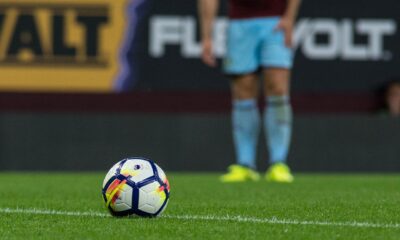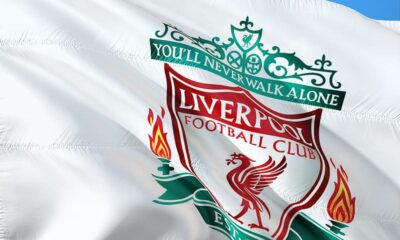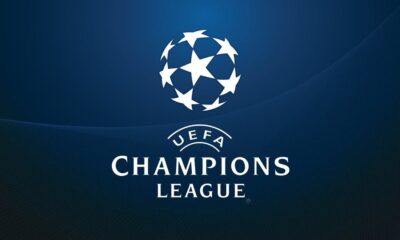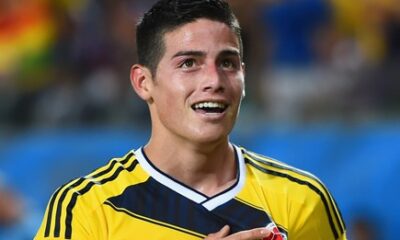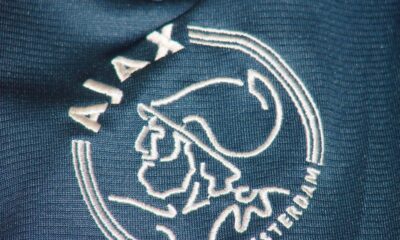Football
Ian Callaghan: Liverpool’s Most Underrated Legend
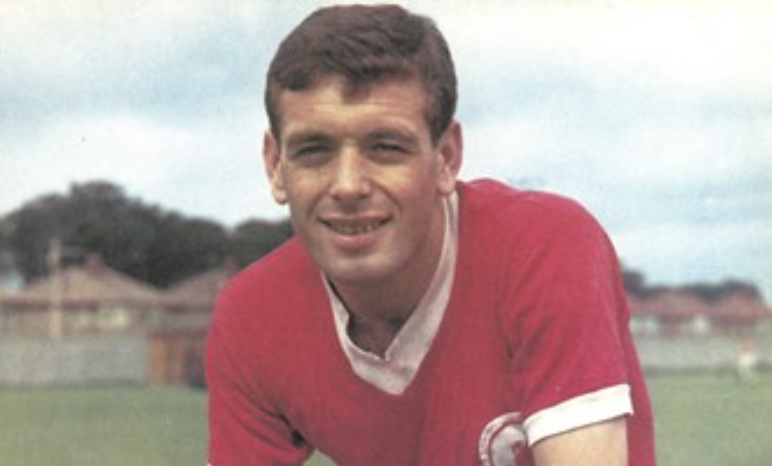
Ian Callaghan: Liverpool’s Most Underrated Legend
When we think about Liverpool legends, names like Ian Rush, Steven Gerrard and Kenny Dalglish immediately come to mind. Liverpool fans have been blessed with amazing talents who can single-handedly change a game with their consistent goal-scoring and incredible touch. But if we take a gander at the top of Liverpool’s all-time appearance list, a perhaps unfamiliar name will come up on top. Enter Ian Callaghan.
A forgotten legend?
Despite playing 857 games for Liverpool between the 1959-60 and 1977-78 seasons, Ian Callaghan has been largely forgotten by a vast majority of football fans and is rarely mentioned by fans outside of Liverpool, when thinking about English legends of the beautiful game. In fact, if we search his name on Google, very few articles come up, and his Wikipedia page only has a few paragraphs talking about his playing days.
Often described as a model professional, teammates and opponents have nothing but praise for the right winger, as not only was he a good player, using his pace and skills to skip past defenders on the right flank before providing deadly crosses into the middle for the forwards — often Ian St. John, Roger Hunt or Kevin Keegan among others, but he was also a good person off the pitch who looked out for teammates and the community in general.
Before his career had even started, Callaghan already had high praise, as the Liverpool record-holder for appearances, Billy Liddell, who also played on the right, proclaimed that Ian Callaghan, who was then only 17 years old, was his natural successor. Callaghan proved it, as he debuted for Liverpool in a second division match against Bristol Rovers, in which he got a standing ovation by pretty much everyone on the pitch as he put his pace and skills on display and contributed to 3 of the 4 goals scored by Liverpool after replacing Liddell as a substitute in the match.
Ian Callaghan at 800 games for Liverpool. He finished on 857 games, a club record. pic.twitter.com/bUMtJzFC64
— LFC in B&W (@arthurjarrett) August 21, 2019
Breaking into the Liverpool XI
After breaking through into the first team in the 1959-60 season, when Liverpool was still in the old Second Division under legendary Bill Shankly, Ian Callaghan became a first-team regular by the time Liverpool achieved promotion back to the First Division in 1962 and had become a crucial player by 1964 when the club won their first First Division title under Shankly.
Deployed predominantly on the right of a midfield four, Callaghan enjoyed arguably his best season statistically, assisting on 9 goals and scoring 8 himself, including 2 in a crucial tie against city rivals and reigning champions Everton at Anfield. The game in question was the 10th game of that season, with Liverpool winning and losing 4 each before the Merseyside derby. With 2 points for a win at the time, Liverpool’s 9 points put them 10th in the table. Although Shankly had proclaimed that his side had enough talent to challenge for the title, they would have to kick it up a notch to prove that they would be a serious threat for the championship.
And for that Merseyside derby, Liverpool, and in particular Ian Callaghan, did turn up. In this match, Callaghan often moved into the middle, as almost a third centre forward. With his pace and skill, he would prove troublesome for Everton defenders. He banged a shot into the top corner from 25 yards one minute before half-time, while connecting on a low cross from Jimmy Melia and scoring thanks to a howler from opposition goalkeeper Alex Scott. His two goals and relentless attacking play led Liverpool to a 2-1 win over Everton — their second out of five attempts at Anfield that season.
A taste of success
The massive win over their hated city rivals proved to be a season-changing moment, as it spurred them into a 5-game winning streak, and they would go on to win 8 of their next 9 games after beating Everton, including a 1-0 win over Manchester United, who would go on to finish 2nd in the league that season, at Old Trafford. A draw against Arsenal followed, which put Liverpool top of the league on 28 points, level with Blackburn Rovers and Tottenham.
The team eventually won the title after a 5-0 thrashing of Arsenal at Anfield, and finally ended their 17-year wait for another title. The next season, though, would see them plummet to 7th in the table, with a domestic cup run on their hands and a shot at the European Cup, which they lost to a legendary Inter side in the semi-finals after a 3-0 thrashing at the San Siro undid a 3-1 deficit after the first leg at Anfield.
Episode 25 of #LFCWorld airs tonight at 20.30 GMT featuring #LFC legend Ian Callaghan. Watch a preview here: https://t.co/iEISLDEoDA
— LFCTV (@LFCTV) January 29, 2015
FA Cup success
The heartbreaking loss paired with a 7th placed finish, while United cruised to the title, meant that this season in itself wasn’t much of a success, but the club did win their first FA Cup since 1920, as Callaghan ran past two defenders and into the penalty box in the 113th minute and produced a classic cross for Scottish striker Ian St. John, who headed home to make it 2-1. It would be the scoreline at the end of the game, and Callaghan once again showed his class in the final and led Liverpool to the illustrious cup victory.
This moment would still be one of the most treasured memories of Callaghan’s career, as remembering his win, he would say that it is the favourite memory of his illustrious career. By this time, Callaghan had already established himself as a top winger in English football, and after the 1965-66 season, where Liverpool won a 2nd First Division title in 3 years, Callaghan was called up to represent England as the squad prepared for the World Cup on home soil.
Representing England, chasing club silverware
One of the younger players of the squad at the age of 24, a “wingless” narrow 4-1-3-2 formation by England and players such as Blackpool’s Alan Ball meant that Callaghan only featured in one game in England’s World Cup winning side, a 2-0 win over France in the group stage. Nevertheless, he was part of the England squad which made history and remains to this day as one of the only English players ever to touch the World Cup trophy.
The next 4 seasons, however, would prove disappointing for the Reds, as they failed to win a single trophy except for the 1967 Charity Shield, not qualifying for the European Cup since their 1967 campaign, which ended thanks to Johan Cruyff and a young Ajax side, losing in the FA Cup before the semi-finals stage in each of the 4 seasons, and surrendering each of the 4 titles to Don Revie’s Leeds, bitter rivals Manchester United and city rivals Everton, Arsenal as well.
For Callaghan, though, these seasons were good individual seasons, as he seemed to reach the peak of his powers, constantly beating defender after defender on the right flank and getting to the byline before crossing it in for whichever centre forward was waiting for the ball. Alongside Peter Thompson on the left, the two made a deadly duo on the two flanks, scaring opposing defenders and goalkeepers.
Best wishes to Ian Callaghan – a member of our 1966 @FIFAWorldCup-winning squad – who celebrates his 8️⃣0️⃣th birthday today! pic.twitter.com/m5NsELpOBl
— England (@England) April 10, 2022
Liverpool’s rebuild
By the 1970-71 season, it was clear to everyone around or supporting the club that a rebuild of the squad was imminent, as club legend Roger Hunt had left the club the previous summer, and the team in general was in a bit of a transitional period. Goalkeeper Tommy Lawrence was towards the tail end of his Liverpool career, while future Liverpool legend Ray Clemence had just started his; defenders like Gerry Byrne and Ron Yeats bowed out for the likes of Phil Thompson, and attackers like Kevin Keegan came in to bolster the frontline.
Coming 5th in the league that season and being runners up in the FA Cup, this season was perhaps most significant to Callaghan for the knee operation that he undertook during the season, which threatened his future in football. As a winger who relied on both his acceleration and immaculate skill to skip past defenders, a knee surgery would mean that he would lose a lot of his pace. Once he returned, though, Shankly found a new position for him, in the central of midfield.
Adapting positions
Combining his skill with experience and vision, Callaghan was a natural fit for the central midfield role, pulling the strings with through balls and long passes to the centre forwards or the wide midfielders, with him drifting into the wide areas at times to deliver the crosses that he made his name with.
He immediately made this role into his own, with him occupying the central midfield role alongside players such as Emlyn Hughes and Alun Evans. The move to central midfield meant that he did not have to use his pace as much, but it showcased the technical side of his game, with his passes often finding strikers and forwards who benefitted from his magnificent play and reading of the game.
After his injury in the 1970-71 season, he returned as a regular starter for Liverpool in the 1971-72 season, contributing to a Liverpool side who finished 3rd in the league, just one point behind eventual winners Derby County. Along with Manchester City, they qualified for the UEFA Cup the following season, where they hoped to succeed in the European stage after knocking on the door for so many years. In the other cups, they were knocked out by Bayern in the Cup Winners’ Cup, while losing in the 4th rounds of both the League Cup and the FA Cup.
Success returns to the Reds
Callaghan and Liverpool entered the 1973 season having not won anything since the 1967 Charity Shield, but the newly rebuilt Liverpool squad had aspirations of success and championship glory, and the season started well, with Keegan and Toshack both scoring goals to fire Liverpool to the top of the table and the UEFA Cup Semi-Finals by January. The season would prove to be a monumental success for the Reds, winning the league title for the first time since 1966, and reaching the UEFA Cup Final to face German side Borussia Monchengladbach.
In both legs of the Final, Ian Callaghan was deployed on the left of a midfield three alongside Peter Cormack and Emlyn Hughes. Playing the first leg on home soil, Liverpool surged to a 3-0 aggregate lead as Kevin Keegan scored a brace, and a spectacular team performance meant that they needed to prevent a loss by 3 or more goals in Germany to win their first ever European Trophy. A 2-0 loss at Germany did not ruin the Reds’ mood, as they had finally won the coveted European title, a UEFA Cup that was a signal to Europe that the Reds were coming.
The following season saw Liverpool lose out to Don Revie’s Leeds in the League and Red Star Belgrade in the Second Round of the European Cup, with the only trophy that season coming from the FA Cup, where they beat Newcastle 3-0 in the Final. Despite the differing fortunes in different competitions, Ian Callaghan reached the height of his power this season, as he was voted FWA Player of the Year that season.
Personal accolades
The following season saw Liverpool lose out to Don Revie’s Leeds in the League and Red Star Belgrade in the Second Round of the European Cup, with the only trophy that season coming from the FA Cup, where they beat Newcastle 3-0 in the Final. Despite the differing fortunes in different competitions, Ian Callaghan reached the height of his power this season, as he was voted FWA Player of the Year that season.
Pulling the strings from the midfield in an industrious but creative midfield three, Callaghan continued to dominate the midfield despite him getting up in age, and Shankly’s shock retirement in 1974 after the FA Cup win did not stop him from continuing to contribute to a Liverpool side who were aiming for domestic and European successes which the club has not achieved before.
Bob Paisley, who had been Shankly’s assistant, took the job after his predecessor’s shock retirement following the FA Cup win against Newcastle and continued to guide the team to a 2nd-placed finish in the league only behind Derby County.
Ian Callaghan was named FWA Footballer of the Year on 2 May 1974, becoming first #LFC player to win the prestigious award. His tireless but clever style of play didn't go unnoticed and he deservedly claimed it!#LFChistory_net pic.twitter.com/uVeIjJ8zKT
— LFChistory.net (@LFChistory) May 2, 2022
Age is just a number
By the 1976 season, the Liverpool side was arguably better and more flexible than any team under Shankly’s guidance, and Callaghan, by now the longest-serving player in the squad, was accompanied by relative newcomers Ray Kennedy and Jimmy Case in the midfield amongst other players brought in.
The team would win the domestic and European double, with Callaghan playing all of the team’s UEFA Cup games and 40 of their 42 league games, missing only 2 towards the start of the season. At 34 years old, Callaghan proved to still be an instrumental part of the team as Liverpool beat Barcelona and Club Brugge en route to another UEFA Cup win.
By this point, Callaghan was getting up in age, and the pace and skill that made him such a good winger earlier in his career was gradually going away, but Callaghan still had the vision and passing that could see him hit a long pass from deep to strikers like Kevin Keegan who stand to benefit from those incredible long-passes.
The 1977 season would see Liverpool reach the European Cup Final to face an old foe in Borussia Monchengladbach, whom they beat in the 1973 UEFA Cup Final. Just 4 days earlier from the Wednesday Final, Liverpool would lose the FA Cup Final against bitter rivals Manchester United with Callaghan only coming off the bench in the 64th minute for David Johnson. Losing the chance of a treble, the team needed to focus ahead of the European Final, and Paisley reinstated Callaghan into the midfield for the game in Rome, an inspiring decision as Callaghan won the ball in the midfield and passed it to Heighway who passed it onto McCormack for the first goal of the game.
"The performance that we did to win it was recognised throughout Europe, and that had to be the best moment of my life," Bob Paisley said afterwards.
The goals, and Keegan's slaloming run to win the penalty for the third, are all belters.pic.twitter.com/ZlhzfiBrmZ
— MUNDIAL (@MundialMag) September 8, 2021
Bowing out as a Anfield legend
Playing as a playmaker who roamed around the pitch and playing in a more advanced role compared to fellow midfielders Jimmy Case and Terry McDermott, Callaghan became the only player to play in the Second Division and lift the European Cup title, playing a crucial part throughout his 15 years in the club.
The veteran played on for one more year in the Liverpool midfield, playing with a pair of Scottish newcomers in forward Kenny Dalglish and defender Alan Hansen. Everyone knew, though, that Callaghan’s time as an elite level footballer was coming to an end, and it was this that caused Paisley to bring in another Scot, Graeme Souness, from Middlesbrough for £350,000.
Callaghan moved on following the 1977-78 season after Liverpool successfully defended the European Cup by beating Club Brugge 1-0 in the Final. His replacement, Graeme Souness, played ahead of Callaghan, and it would be the final appearance on the team sheet for Liverpool.
Closing the curtain on the beautiful game
A season with the Fort Lauderdale Strikers in the North American Soccer League followed before spells at Swansea, Canberra City and Cork City. By 1981 Callaghan was at Crewe Alexandra, where he played the final 15 games of his career and closed the curtain on one of the most decorated yet underrated careers in English football.
Despite not scoring many goals, Ian Callaghan was always an attacking threat. Whether he was flying down the right flank using his pace and skill then crossing with often pinpoint accuracy from the byline to strikers or surging midfielders, or playing from the midfield and creating from deep with his vision and passes, Callaghan was always someone who needed to be marked and not to be left out.
Not only was he a fantastic player, but he also embodied, more than anyone, Liverpool’s recovery from ex-Champions who have fallen into the second tier, to champions of England, and to being champions of Europe.
Replacing a Liverpool legend in Billy Liddell, and replaced by another in Graeme Souness, Callaghan always played with legends of the game like Kevin Keegan who often took the limelight and shadowed him, but he should be appreciated for having the longevity he had, and the amazing player that he was.
We hope you enjoyed the article ‘Ian Callaghan: Liverpool’s Most Underrated Legend.’ Where do you think Callaghan ranks amongst Liverpool’s legends? Let us know!
Read more on sports below:
- Cycling events to look out for in 2022
- NBA play-in tournament explained
- Youngest UFC competitors in 2022
-
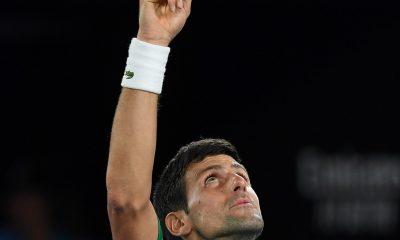
 News1 month ago
News1 month agoThe Best Male Tennis Players of All Time
-
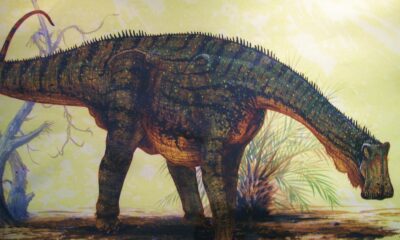
 Uncategorised1 month ago
Uncategorised1 month agoWhat Dinosaur Has 500 Teeth?
-
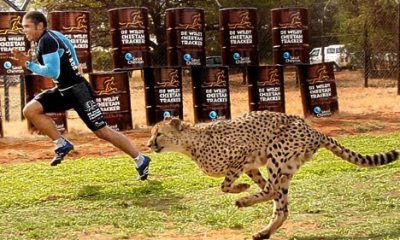
 News1 month ago
News1 month agoThe Fastest Rugby Players Ever
-
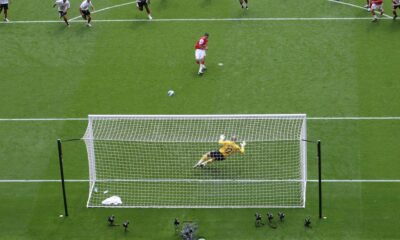
 Football1 month ago
Football1 month agoThe Best Penalty Takers of All Time
-
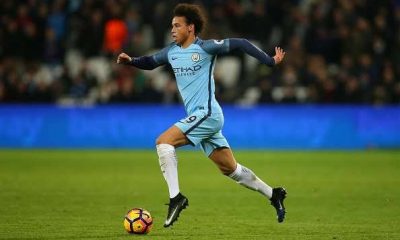
 Football1 month ago
Football1 month ago10 of the most underrated footballers in the world right now
-
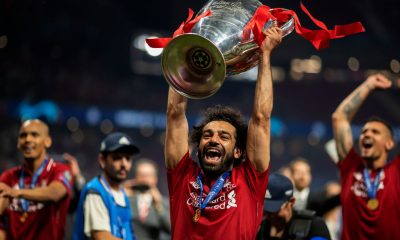
 Football1 month ago
Football1 month agoPlayers with the most goals in a Premier League season
-
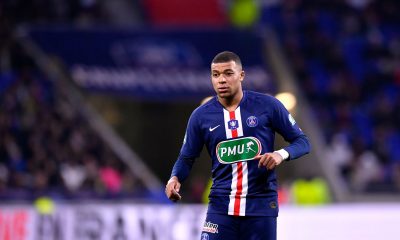
 Football1 month ago
Football1 month agoWho is the Fastest Football Player in the World?
-
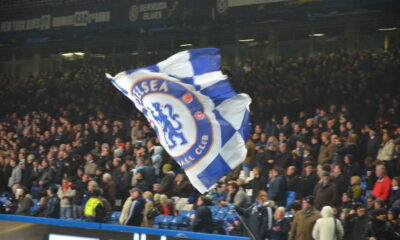
 Football1 month ago
Football1 month agoChelsea’s Possible Lineup For Next Season




